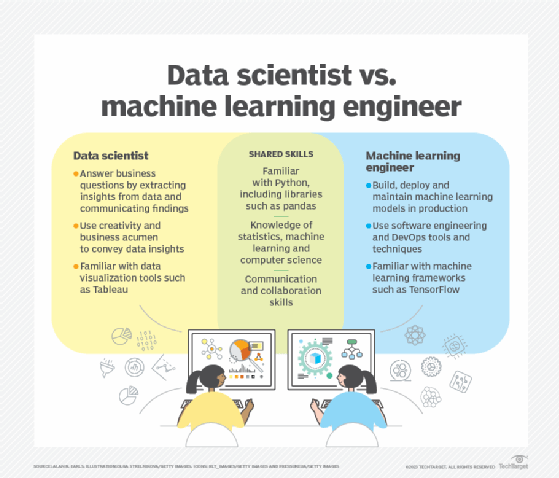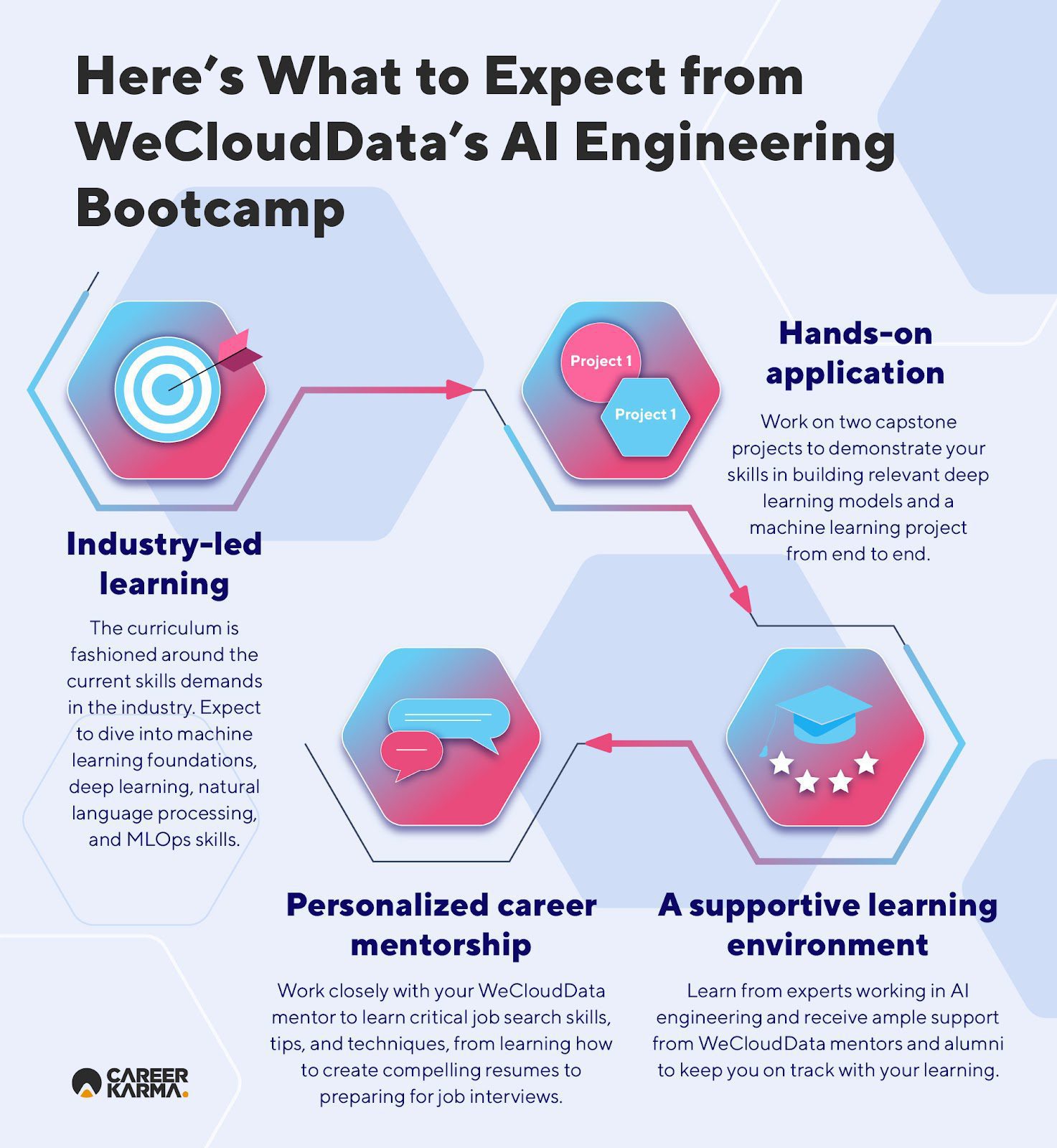All Categories
Featured
Table of Contents
On the other hand, ML engineers focus on structure and releasing artificial intelligence designs. They concentrate on training versions with data to make forecasts or automate jobs. While there is overlap, AI designers manage even more varied AI applications, while ML designers have a narrower concentrate on equipment understanding formulas and their sensible execution.
Artificial intelligence engineers focus on establishing and releasing machine knowing designs into production systems. They work with design, making certain designs are scalable, efficient, and integrated right into applications. On the various other hand, information researchers have a broader duty that consists of information collection, cleansing, expedition, and structure models. They are commonly in charge of drawing out insights and making data-driven decisions.
As organizations increasingly embrace AI and equipment discovering modern technologies, the need for proficient specialists grows. Machine learning designers work on sophisticated tasks, contribute to advancement, and have competitive wages.
ML is essentially various from conventional software advancement as it concentrates on mentor computers to pick up from information, rather than programs explicit regulations that are executed systematically. Uncertainty of outcomes: You are probably made use of to composing code with foreseeable results, whether your feature runs when or a thousand times. In ML, nonetheless, the results are less certain.
Pre-training and fine-tuning: How these models are trained on vast datasets and afterwards fine-tuned for specific jobs. Applications of LLMs: Such as message generation, belief evaluation and details search and access. Papers like "Focus is All You Need" by Vaswani et al., which introduced transformers. Online tutorials and training courses concentrating on NLP and transformers, such as the Hugging Face program on transformers.
The Best Strategy To Use For How I Went From Software Development To Machine ...
The ability to manage codebases, merge changes, and settle conflicts is equally as crucial in ML advancement as it is in traditional software application jobs. The skills created in debugging and screening software applications are very transferable. While the context may alter from debugging application logic to determining problems in information handling or model training the underlying principles of methodical investigation, hypothesis testing, and iterative improvement are the very same.
Machine knowing, at its core, is greatly reliant on statistics and likelihood theory. These are critical for understanding exactly how algorithms gain from information, make predictions, and evaluate their performance. You ought to think about becoming comfy with principles like statistical importance, circulations, hypothesis testing, and Bayesian thinking in order to design and interpret versions properly.
For those interested in LLMs, a thorough understanding of deep learning architectures is useful. This consists of not just the mechanics of neural networks but likewise the design of specific designs for various usage situations, like CNNs (Convolutional Neural Networks) for image handling and RNNs (Reoccurring Neural Networks) and transformers for sequential data and natural language processing.

You need to understand these issues and find out techniques for recognizing, reducing, and interacting about predisposition in ML designs. This consists of the prospective influence of automated decisions and the moral implications. Numerous versions, specifically LLMs, call for significant computational sources that are often given by cloud platforms like AWS, Google Cloud, and Azure.
Building these abilities will not only help with an effective shift right into ML however also ensure that developers can add efficiently and responsibly to the advancement of this vibrant field. Concept is important, yet nothing beats hands-on experience. Beginning dealing with projects that permit you to use what you've discovered in a useful context.

Join competitors: Sign up with systems like Kaggle to take part in NLP competitions. Construct your projects: Begin with straightforward applications, such as a chatbot or a text summarization device, and progressively enhance intricacy. The field of ML and LLMs is swiftly developing, with new innovations and modern technologies emerging frequently. Staying updated with the current research study and fads is critical.
More About Embarking On A Self-taught Machine Learning Journey
Sign up with areas and discussion forums, such as Reddit's r/MachineLearning or area Slack networks, to discuss concepts and get advice. Attend workshops, meetups, and seminars to get in touch with various other experts in the field. Contribute to open-source tasks or create article about your learning journey and tasks. As you obtain competence, start searching for opportunities to incorporate ML and LLMs into your job, or seek brand-new duties concentrated on these technologies.
Possible usage instances in interactive software, such as recommendation systems and automated decision-making. Comprehending uncertainty, basic analytical procedures, and chance circulations. Vectors, matrices, and their function in ML algorithms. Mistake minimization techniques and gradient descent discussed merely. Terms like design, dataset, attributes, tags, training, inference, and recognition. Information collection, preprocessing techniques, model training, assessment procedures, and deployment factors to consider.
Decision Trees and Random Woodlands: User-friendly and interpretable designs. Assistance Vector Machines: Maximum margin category. Matching trouble kinds with proper designs. Balancing efficiency and complexity. Fundamental framework of neural networks: neurons, layers, activation functions. Split calculation and ahead propagation. Feedforward Networks, Convolutional Neural Networks (CNNs), Reoccurring Neural Networks (RNNs). Picture acknowledgment, series prediction, and time-series analysis.
Data circulation, improvement, and function engineering approaches. Scalability principles and efficiency optimization. API-driven methods and microservices assimilation. Latency monitoring, scalability, and version control. Constant Integration/Continuous Deployment (CI/CD) for ML workflows. Design tracking, versioning, and efficiency tracking. Identifying and resolving modifications in design performance in time. Resolving performance bottlenecks and source administration.
The 20-Second Trick For What Is The Best Route Of Becoming An Ai Engineer?
You'll be introduced to 3 of the most relevant parts of the AI/ML technique; overseen learning, neural networks, and deep understanding. You'll understand the differences in between standard programming and maker understanding by hands-on growth in supervised knowing before developing out complicated dispersed applications with neural networks.
This program functions as an overview to machine lear ... Show A lot more.
The average ML process goes something such as this: You require to comprehend business problem or purpose, before you can attempt and address it with Artificial intelligence. This usually means research and partnership with domain name degree specialists to define clear objectives and needs, in addition to with cross-functional teams, including data scientists, software program designers, product supervisors, and stakeholders.
: You choose the best version to fit your goal, and after that train it making use of collections and structures like scikit-learn, TensorFlow, or PyTorch. Is this working? A vital part of ML is fine-tuning models to get the desired end outcome. At this stage, you examine the performance of your picked device finding out design and after that use fine-tune model specifications and hyperparameters to enhance its efficiency and generalization.
Does it continue to function currently that it's real-time? This can additionally mean that you upgrade and retrain models routinely to adjust to altering information circulations or service demands.
Getting The What Does A Machine Learning Engineer Do? To Work
Machine Knowing has blown up in recent years, many thanks in component to advances in data storage space, collection, and computing power. (As well as our wish to automate all the things!).
That's just one task publishing website also, so there are also more ML work out there! There's never been a far better time to obtain into Maker Understanding.
Below's the important things, tech is among those industries where several of the most significant and finest people worldwide are all self educated, and some also openly oppose the idea of people getting a college degree. Mark Zuckerberg, Costs Gates and Steve Jobs all left prior to they got their degrees.
Generative Ai Training Fundamentals Explained
As long as you can do the job they ask, that's all they really care about. Like any type of new skill, there's most definitely a finding out curve and it's going to feel hard at times.
The main differences are: It pays insanely well to most other jobs And there's a continuous learning component What I indicate by this is that with all tech functions, you have to remain on top of your game to ensure that you understand the existing abilities and modifications in the sector.
Kind of just exactly how you could discover something brand-new in your current job. A great deal of individuals who work in technology in fact appreciate this due to the fact that it means their work is constantly transforming a little and they delight in learning brand-new points.
I'm going to point out these abilities so you have a concept of what's required in the work. That being claimed, an excellent Equipment Learning program will certainly educate you mostly all of these at the exact same time, so no requirement to anxiety. Some of it might even appear challenging, however you'll see it's much less complex once you're using the theory.
Latest Posts
How To Crack Faang Interviews – A Step-by-step Guide
What To Expect In A Software Engineer Behavioral Interview
Top Coding Interview Mistakes & How To Avoid Them